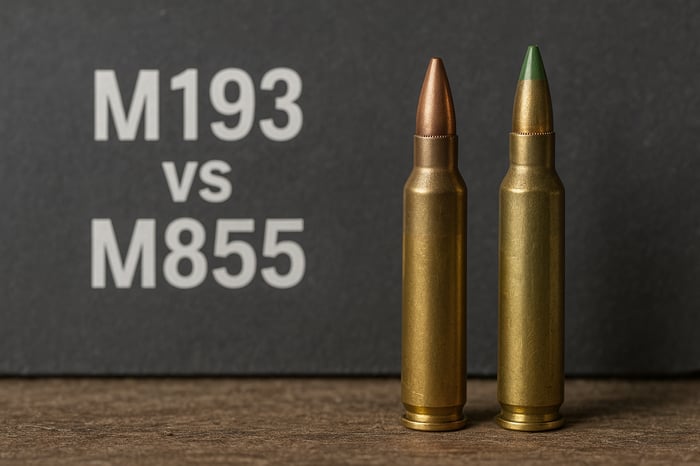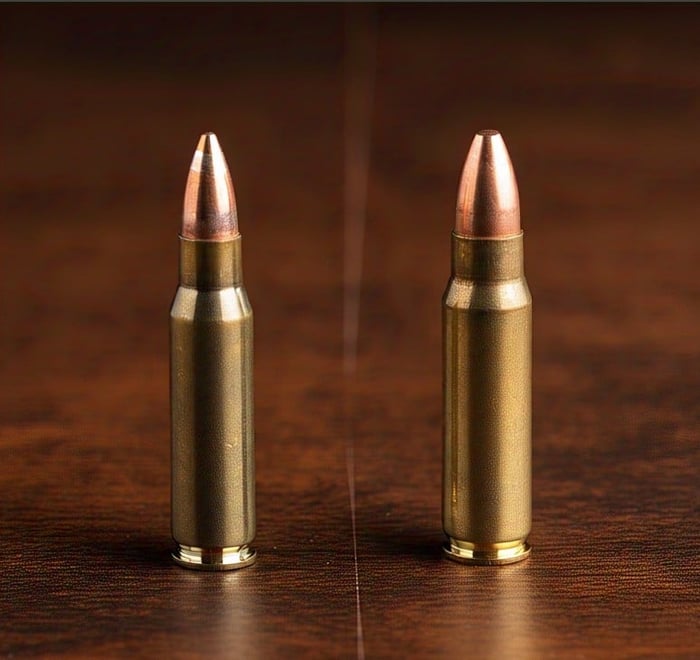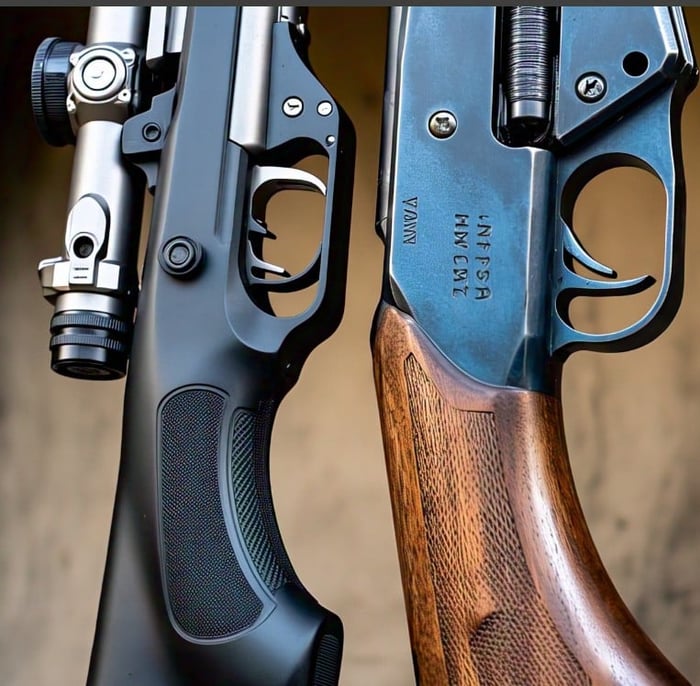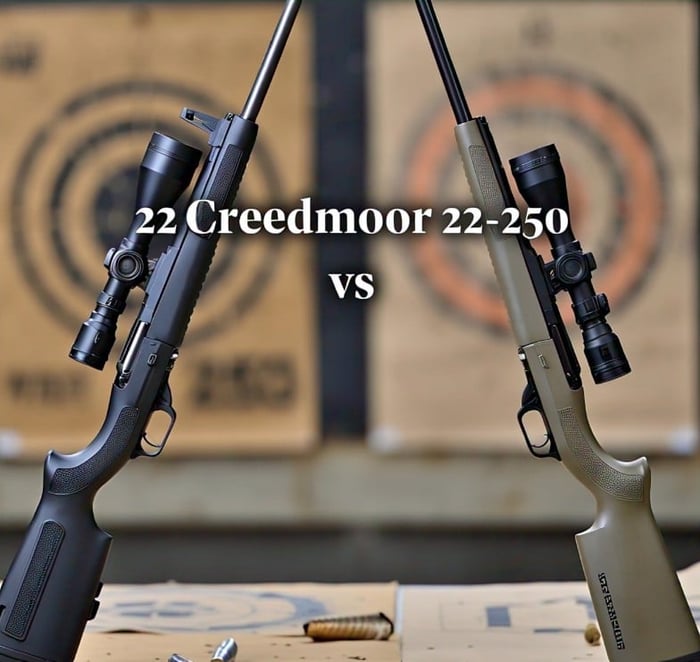When it comes to selecting the right 5.56mm ammunition for your rifle, the M193 vs M855 debate is one that every shooter encounters. These two rounds, both staples in the world of AR-15s, M16s, and other 5.56mm platforms, have distinct characteristics that make them suited for different purposes. Whether you’re a recreational shooter, a hunter, a law enforcement officer, or a military professional, understanding the M193 vs M855 comparison is crucial for making an informed decision. In this comprehensive 3,000-word guide, we’ll explore every aspect of these rounds, from their history and technical specs to their performance, ideal use cases, and more. Let's get into the M193 vs M855 battle and assist you in choosing the ideal ammo for your requirements.
What Are M193 and M855: Understanding Them
Let's begin with the fundamentals before we go into M193 vs M855 in detail. M193 and M855 are both 5.56x45mm NATO cartridges, both used for rifles such as the AR-15, M16, and other 5.56mm rifles. Though both share the same cartridge case, they differ quite starkly in terms of their bullet designs, weights, and intended use.
M193: The Original 5.56mm Round
The M193, which debuted in the 1960s, was the first 5.56mm cartridge used by the U.S. military, designed for the M16 rifle during the Vietnam War. It's a 55-grain full metal jacket (FMJ) bullet with a lead core, made to travel at high velocity and be lightweight. The M193 was designed to be dependable, easy to carry, and effective at close to medium ranges, and to fragment upon impact. This made it revolutionary in its era, providing military personnel with a light substitute to the weighty 7.62mm caliber.
M855: The New Age Evolution
The M855, which was introduced in the 1980s, is a 62-grain FMJ bullet with a steel penetrator tip and is commonly known as "green tip" ammo because of its green paint. It was designed to address NATO's need for increased penetration against body armor and light barriers, an indication of the evolving nature of warfare. The M193 vs M855 argument usually revolves around this change in design philosophy—fragmentation for soft targets or penetration for armored or covered targets.
The History Behind M193 vs M855
To get a complete picture of the M193 vs M855, it's interesting to take a look at their history. Both rounds were created in reaction to certain demands, and learning about their history tells us a great deal about why they function the way that they do.
The Origin of M193
During the early 1960s, the U.S. military was in search of a new rifle and cartridge to supersede the M14 and its 7.62x51mm NATO round. The M14 was cumbersome and had bulky ammunition, so it was not the best for Vietnam's dense jungles. The M16 coupled with the M193 provided the answer. The M193 55-grain bullet, going at about 3,240 feet per second (fps) from a 20-inch barrel, was lightweight and fast. Its high speed made it yaw and break up on impact, producing horrible injuries at close quarters. But it fought against obstacles such as thick undergrowth or light cover, which created debates that would one day affect the M193 vs M855 controversy.
The Creation of M855
By the 1980s, the battlefield had changed. Troops were increasingly encountering enemies with body armor, and NATO needed a standardized 5.56mm cartridge with improved penetration. The M855 was the solution. Its 62-grain bullet, steel penetrator tip, was developed to breach steel plates, helmets, and light vehicles. Although more versatile in contemporary combat, it compromised some of the M193's fragmentation, and with it came dual reviews for its terminal performance. M193 vs M855 usually revolves around this compromise: pure stopping power versus tactical use.
M193 vs M855: Technical Specifications
To better understand M193 vs M855, let's look at their technical specifications side by side:
Feature
M193
M855
Bullet Weight
55 grains
62 grains
Bullet Type
FMJ, lead core
FMJ, steel penetrator tip
Muzzle Velocity
~3,240 fps (20" barrel)
~3,000 fps (20" barrel)
Muzzle Energy
~1,300 ft-lbs
~1,250 ft-lbs
Penetration
Moderate
High
Fragmentation
High
Moderate
Bullet Weight and Velocity
The 55-grain bullet in the M193 is lighter, which enables it to have faster muzzle velocities (approximately 3,240 fps out of a 20-inch barrel). It is, therefore, very fast and flat-shooting at closer distances, perfect for close-range engagements. M855, with 62 grains, is heavier and just a bit slower (approximately 3,000 fps), but its extra weight ensures that it retains more momentum for improved penetration. A consideration in the M193 vs M855 debate, however, is this variation in weight and speed.
Penetration and Fragmenting
The design of the M193 focuses on yawing and fragmentation. On impact against a soft target, it tends to disintegrate, causing large wound channels that are extremely efficient at stopping threats. It does not, however, penetrate barriers such as steel or thick glass well. The steel penetrator tip of the M855 is designed to penetrate light armor and cover and thus serves better in tactical applications. But it is not as consistent in fragmentation, and it will not break up on passage through soft tissue. This is an important distinction when considering M193 vs M855 for particular purposes.
Ballistic Performance of M193 vs M855
How do these cartridges perform in the real world? Let's compare their ballistic profiles to get a better idea of M193 vs M855.
M193 Ballistics
The M193’s high velocity gives it a flat trajectory out to about 200 yards, making it easy to aim and effective for close-quarters combat. Its lightweight bullet yaws quickly upon impact, often fragmenting into multiple pieces. This creates devastating wounds, especially at velocities above 2,700 fps (typically within 100-150 yards from a 20-inch barrel). However, beyond 300 yards, the M193 loses energy rapidly, reducing its effectiveness. It also fares poorly against barriers, a significant weakness in the M193 vs M855 debate.
M855 Ballistics
The heavier 62-grain bullet of the M855 has a lower muzzle velocity but greater energy retention at longer ranges. It's intended to penetrate 3mm of steel at 600 meters, which is why it's a favorite among military forces where troops must shoot targets behind cover. But its terminal performance on soft targets is less consistent. The M855 will yaw and fragment, but is more likely to travel through tissue intact, producing smaller wound channels. It is consequently less well-suited for self-defense or hunting than the M193 in the M193 vs M855 comparison.
M193 vs M855: Ideal Use Cases
Selecting M193 vs M855 is situational. Let's discuss the optimal uses of each round.
M193 Applications
Self-Defense: Fragmentation of the M193 ensures it is highly effective for protecting your home. Its capacity for producing large channels of wounds reduces the chances of over-penetrating in urban settings, which is an important consideration given the close confines of city space.
Hunting: When hunting small to medium game like varmints, coyotes, or wild hogs, the M193's high speed and fragmentation make it perfect. It produces instant, humane kills at short ranges.
Range Shooting: With the M193 being cheap and ubiquitous, it makes a very common choice for target shooting, practice, or even training sessions.
Civilian Use: In general-purpose use, the M193's practicality and inexpensiveness make it a top favorite among AR-15 owners.
M855 Use Cases
Tactical Situations: The M855's ability to penetrate allows it to be more suitable for use by law enforcement or the military, where targets can be wearing body armor or taking cover behind something.
Barrier Penetration: When shooting around light barriers such as automobile doors, windshields, or thin partitions, the M855 performs better than the M193.
Long-Range Fire: The M855's heavier bullet holds velocity better at ranges of over 300 yards, which makes it more suitable for use in long-range engagements.
Military Uses: The M855's NATO-standardization and penetrative capability make it an essential for soldiers who shoot in various conditions.
When comparing M193 vs M855, your purpose—self-defense, hunting, or tactical use—dictates the choice.
M193 vs M855: Precision and Barrel Twist Rates
Precision is a key concern in the M193 vs M855 contest, and it greatly depends on your rifle's twist rate.
M193 and Twist Rates
The M193 was intended for lower twist rates, like 1:12 or 1:14, that were prevalent in early M16s. These twist rates stabilize the light 55-grain bullet ideally, providing close groupings at short to mid ranges. Yet, most contemporary AR-15s have higher twist rates (1:7 or 1:8), which over-stabilize the M193. This can result in decreased accuracy or, in extreme instances, bullet breakup during flight. If you’re using M193, check your barrel’s twist rate to ensure compatibility.
M855 and Twist Rates
The M855, with its heavier 62-grain bullet, needs a higher twist rate (1:7 or 1:8) to stabilize. Firing M855 through an older 1:12 twist barrel makes the bullet tumble, leading to keyholing (when the bullet strikes the target sideways) and poor accuracy. Most new rifles are designed with M855 in mind, but it's still a good idea to check your barrel's specs. This is an important factor in the M193 vs M855 discussion.
Selecting the Proper Barrel
If you have a newer AR-15 with a 1:7 or 1:8 twist, the M855 will probably be the better option for accuracy. For older rifles, use M193 with a 1:12 twist. A 1:9 twist barrel is a compromise, holding both rounds fairly well. Test all your ammo at the range to establish performance.
M193 vs M855: Cost and Availability
Cost and availability are pragmatic factors that affect the M193 vs M855 choice.
M193 Cost and Availability
The M193 is usually the cheaper one, with bulk prices from $0.30 to $0.50 per round (as of 2025). Its straightforward lead-core construction is inexpensive to manufacture, and it's readily available from manufacturers such as Federal, Winchester, PMC, and others. For budget-conscious shooters or those purchasing in bulk for range days, M193 is a budget-friendly option.
M855 Cost and Availability
The M855 is a bit pricier, usually around $0.40 to $0.60 per round, because it contains a steel penetrator tip and more intricate design. It's also commonly found, manufactured by firms such as Lake City, Federal, and IMI. Ranges or some jurisdictions might limit M855 because of its armor-piercing nature, but this restricts it in some locations. Cost tends to swayed the decision in favor of M193 for recreation shooters in the M193 vs M855 discussion.
M193 vs M855: Legal Aspects
Legal limitations are another aspect to take into account when selecting between M193 vs M855.
M193 Legality
The M193 is a common FMJ cartridge with a lead core, and it has no major legal limitations in most areas. It's lawful for civilian ownership throughout the United States, so it's a safe and easy option for most shooters.
M855 Legality
The M855 steel penetrator tip has caused controversy, with some labeling it as "armor-piercing" ammunition. Although it is generally legal for civilian use at the federal level, some states, cities, or shooting ranges might have restrictions. For instance, some indoor ranges prohibit M855 to save their backstops. Always review local laws and range policies prior to buying or using M855. This is a significant practical factor in the M193 vs M855 comparison.
M193 vs M855: Environmental and Range Considerations
Aside from performance and legality, environmental considerations and range regulations can factor into your decision in the M193 vs M855 argument.
M193 and Range Use
The M193's lead-core bullet is typical for the majority of outdoor and indoor ranges. Some tighter environmental regulation ranges might, however, prefer to use lead-free ammunition, potentially restricting M193 usage. Further, its fragmentation reduces the risk of over-penetration, which is an advantage for indoor ranges with thin backstop protection.
M855 and Range Use
The steel penetrator tip of the M855 can harm steel targets or backstops at a range, so it has been banned at some facilities. When you fire at a range with steel targets, be sure to check their policy on ammunition, since M855 can be banned. Its penetration also makes over-penetration more likely in inside situations, which is a safety issue. All these aspects make M193 a better option to use at a range in most situations when weighing M193 vs M855.
Pros and Cons of M193 v/s M855
Let’s summarize the strengths and weaknesses of each round to clarify the M193 vs M855 comparison.
M193 Pros and Cons
Pros:
High fragmentation creates large wound channels, ideal for self-defense and hunting.
Affordable and widely available, perfect for budget-conscious shooters.
Flat trajectory at short ranges makes it easy to aim.
Legal in most jurisdictions with no major restrictions.
Cons:
Poor penetration against barriers like steel or thick glass.
Loses energy rapidly at longer ranges (above 300 yards).
May not stabilise correctly in newer fast-twist barrels (1:7 or 1:8).
M855 Advantages and Disadvantages
Advantages:
Good penetration on body armour, light vehicles, and barriers.
Improved energy retention at longer ranges, ideal for protracted engagements.
Stabilises well in newer fast-twist barrels.
NATO-standardised, providing consistent quality and availability.
Disadvantages:
Less consistent fragmentation, resulting in smaller wound channels on soft targets.
More costly than M193, which can be a significant amount for high-volume shooters.
Possible legal or range limitations owing to its steel penetrator tip.
The M193 v/s M855 question usually boils down to weighing these advantages and disadvantages according to your particular requirements.
M193 vs M855: In-Field Testing and User Reviews
To offer a balanced view of M193 v/s M855, let's discuss in-field testing and user reviews. Both rounds have undergone intense testing by the military, law enforcement agencies, and civilian shooters, providing useful feedback.
M193 Testing and Feedback
Ballistic gel tests indicate that the M193 fragments consistently at velocities over 2,700 fps, producing wound cavities to a depth of 10-12 inches. This renders it extremely effective for hunting and self-defense within 150 yards. Civilian shooters commend its cost-effectiveness and reliability for use on the range, although some comment on its limitations when encountering barriers. When comparing M193 and M855, M193 is generally preferred for its stopping power on unarmored targets.
M855 Testing and Feedback
The M855 is good for penetration testing, penetrating 3mm steel plates at ranges of 600 meters while staying stable with obstructions such as glass or drywall. Ballistic gel testing, however, shows uneven fragmentation, with some rounds passing straight through with very little yaw. Its combat versatility is valued by military users, but civilians tend to frown upon its increased cost and less satisfactory terminal performance against soft targets. These results inform the M193 vs M855 for tactical users.
M193 vs M855: Which One Should You Use?
So, which round wins in the M193 vs M855 battle? The answer will depend on your objectives, rifle, and conditions. Here's a quick rundown to assist you:
Choose M193 if:
You require ammunition for home defense or self-defense, where fragmentation is essential.
You're hunting small to medium-sized game at close distances.
You're a recreational shooter who wants cheap, reliable ammunition for the range.
Your rifle has a slower twist rate (1:12 or 1:9).
You want to avoid legal or range restrictions.
Choose M855 if:
You’re preparing for tactical scenarios involving body armor or light barriers.
You need ammo for long-range shooting (beyond 300 yards).
Your rifle has a fast twist rate (1:7 or 1:8).
You’re in a military or law enforcement role requiring NATO-standard ammo.
Penetration is more important than fragmentation.
In the end, the choice between M193 vs M855 is a matter of your needs. If you're not sure, try purchasing small amounts of both and putting them through some range testing to determine which functions better with your rifle and style of shooting.
FAQs On M193 vs M855
Can I switch between M193 and M855?
Though both are 5.56mm ammo, their performance differs depending on barrel twist rate and application. M193 best operates in low-twist barrels, whereas M855 needs to be fired at higher twists. Always test rounds for compatibility.
Is M855 armor-piercing?
M855's steel penetrator point enables it to pierce lightweight armor, though it's not technically considered authentic armor-piercing ammunition per ATF regulations. Nevertheless, there may be restriction at some ranges or jurisdictions.
Which is preferable for home defense?
The fragmentation of the M193 makes it superior for home defense since it will not over-penetrate walls and cause collateral damage as easily as M855.
Do I require a special barrel for M855?
A 1:7 or 1:8 twist barrel works best for M855 to achieve optimal stabilization. Slower twists (1:12) will result in accuracy problems or keyholing.
Is M193 or M855 superior for hunting?
For medium to small game, M193 is usually preferable due to its fragmentation and rapid energy transfer. The penetration of M855 can result in over-penetration and thus is less suitable for hunting.
Conclusion: M193 vs M855
The debate about M193 v/s M855 is an age-old one among the fans of 5.56mm ammunition, and there cannot be a blanket answer. M193 excels for hunting, self-defense, and economical range shooting because of its fragmentation, cost-effectiveness, and prevalence. The M855, due to its penetration and range capability, is the preferred choice for tactical use, military applications, and barrier-bypassing situations. By learning their differences—bullet weight, velocity, penetration, twist rate compatibility, and legality—you can select the round that best fits your requirements.
Whether you’re plinking at the range, protecting your home, or preparing for a tactical mission, the M193 vs M855 comparison comes down to one question: What’s your goal? Test both rounds, verify your rifle’s twist rate, and stay informed about local laws. With this knowledge, you’re ready to make an informed decision in the M193 vs M855 showdown and hit the bullseye with confidence.





